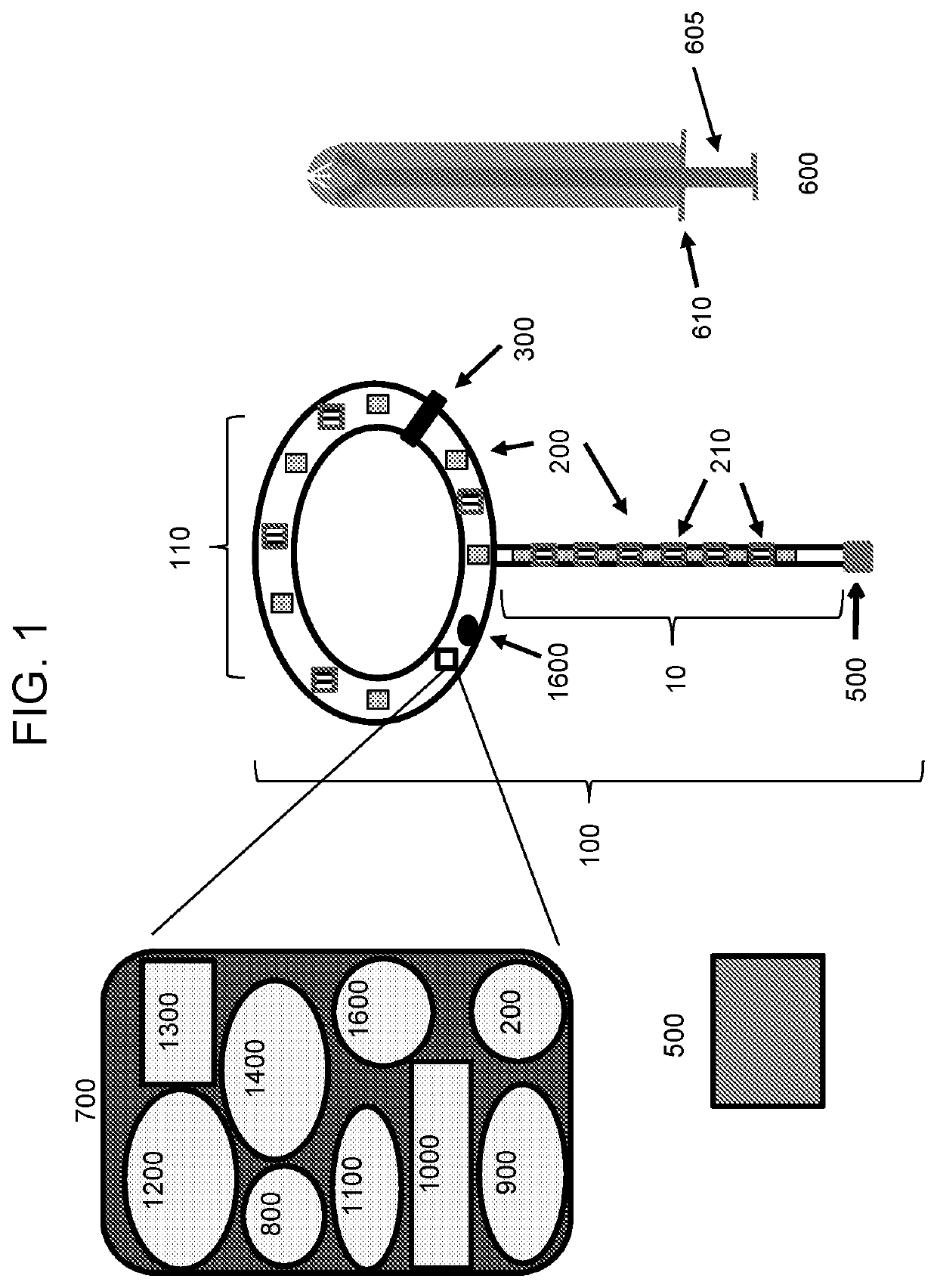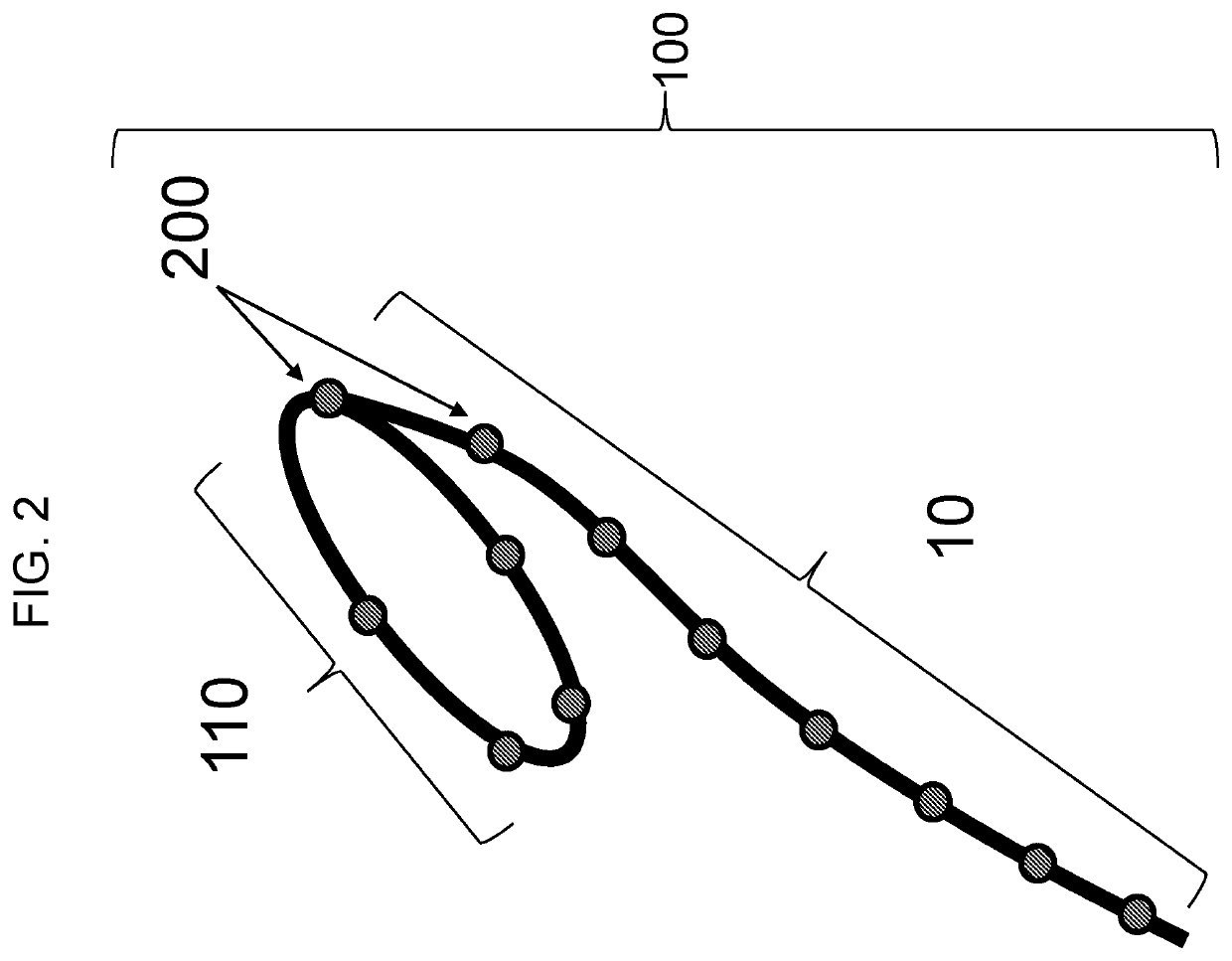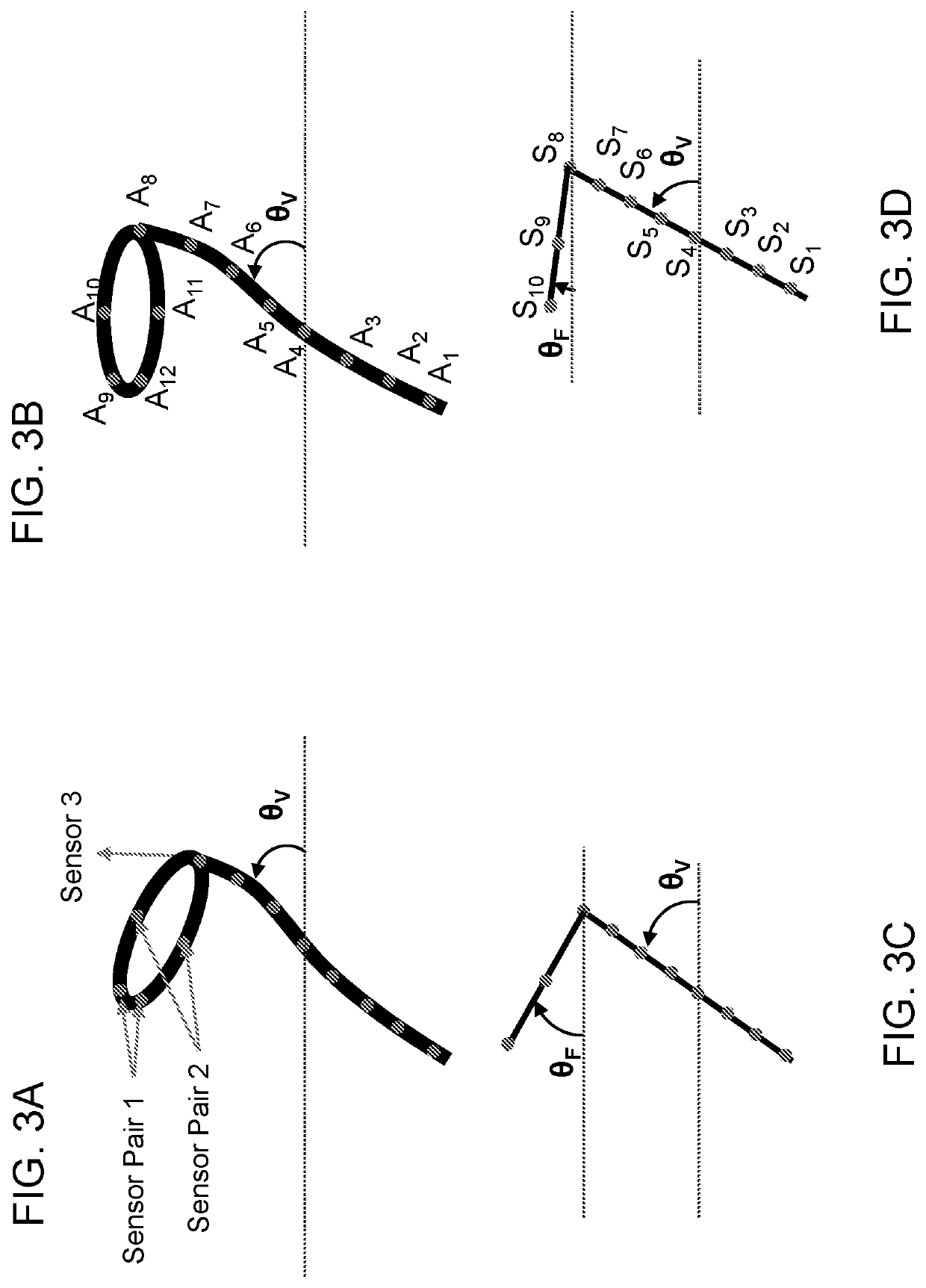Devices, systems, and methods for treating urinary and fecal incontinence
a technology for fecal incontinence and urinary tract, applied in the field of devices, systems and methods for treating urinary tract and fecal incontinence, can solve problems such as difficult implementation of therapies, and achieve the effects of improving or stabilizing the condition of the subject, and reducing the likelihood of urinary
- Summary
- Abstract
- Description
- Claims
- Application Information
AI Technical Summary
Benefits of technology
Problems solved by technology
Method used
Image
Examples
example 1
Data Output in Live Mode and Use with a Smartphone Application
[0204]An intravaginal device described herein is connected to a transmitter box that wirelessly (via Bluetooth) sends the positional data gathered from the device sensors to a smartphone or computer for display on a graphical user interface, e.g., through a smartphone application. The shape of the vagina (data from the MEMS sensors in the device) reflects the position of the subject's pelvic floor in her body. The data is captured as a score based on the angles of the sensors. The score is a measure of the strength and / or position of the subject's pelvic floor muscles. The data created by the device is transmitted to a centralized database creating a personal health record for the subject, providing care and measurable results.
[0205]These data can provide predictive information that notifies a subject, or their health care professional, about the potential need for various treatment options or the status of treatment (e.g...
example 2
Metrics of Sensor Readout as Patient Improves Pelvic Muscle Strength
[0207]A patient with symptoms of urinary incontinence uses an intravaginal device for ˜2.5 minutes twice daily. After performing pelvic floor exercises, the application computes an average weekly score, which increases from a baseline (screen) of 9 to a range of 44-52, reflecting the vaginal angle changes during the lifting of the pelvic floor during exercises. An increase in score correlates with an increase in pelvic muscle strength. The application can also track endurance, which calculates the duration of time holding a lift during an exercise. After a 3 week exercise regimen, the incontinence issue is assessed and, in many cases, would be resolved. If not resolved, the intravaginal device could be used to assess the need for, and possibly to determine the timing of electrical stimulation during, SNM therapy.
example 3
ng Optimal Sensor Positioning
[0208]An intravaginal device (see FIG. 2) was used to characterize specific sensor placement within the intravaginal device (e.g., within main body 110 or tether 10) in ten subjects. The sensors in the main body were within the anterior fornix, lateral fornices and posterior fornix. The sensors in the tether 10 were within the posterior fornix (shared by the main body) and along the vaginal canal caudal to the fornices. The main body contained 5 sensors, while the tether contained 8 sensors (including the one shared with the main body). The subjects had a range of vaginal lengths; these subjects were studied to determine if a subset of the original 12 sensors consistently correlated with pelvic floor movement (e.g., PFL) when the subjects performed a variety of maneuvers and demonstrated superior signal-to-noise characteristics. The sensors in the fornix exhibited lower signal and provided less robust visualization of pelvic floor movement. Of the sensor...
PUM
 Login to View More
Login to View More Abstract
Description
Claims
Application Information
 Login to View More
Login to View More - R&D
- Intellectual Property
- Life Sciences
- Materials
- Tech Scout
- Unparalleled Data Quality
- Higher Quality Content
- 60% Fewer Hallucinations
Browse by: Latest US Patents, China's latest patents, Technical Efficacy Thesaurus, Application Domain, Technology Topic, Popular Technical Reports.
© 2025 PatSnap. All rights reserved.Legal|Privacy policy|Modern Slavery Act Transparency Statement|Sitemap|About US| Contact US: help@patsnap.com



